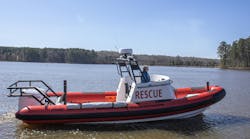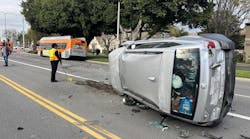The first arriving company officer, and subsequently, the Incident Commander, doesn’t have to be a technician to understand the incident priorities.This is the final article in a series on confined space emergency response at the company officer level. Even if the company officer and the crew has been through Operations Level training, unless the skills learned in that training are practiced routinely, there will still be an appreciable amount of anxiety in dealing with these complex situations.
In the previous articles we discussed developing the Incident Action Plan, or IAP. In this article, we will put the IAP into action and discuss nuances of incident management while working with Technician-level teams.
In review, and as should be established in your department's standard operating guidelines; the first arriving company officer should have either established command or passed it, depending upon the anticipated effect on the outcome by your direct intervention. A size-up should have been performed and personnel should have been accounted for through an incident management system. The first arriving company should have isolated the scene and denied entry to unauthorized persons or personnel. Hazard isolation zones should have been established and protective actions initiated. The company officer should have determined what, if any, hazards are present on the scene, remembering that confined space incidents should be considered hazardous materials incidents until proven otherwise through monitoring of the space's atmosphere. Everyone in the Hot Zone should be protected by appropriate personal protective equipment. On-site experts and process control personnel should be consulted as to the use and hazards in the space.
Depending upon the way your individual department is structured, commonly the first arriving engine company is not the Technician-level team that will be implementing the operational part of the IAP. The first arriving company officer, and subsequently, the Incident Commander, doesn't have to be a technician to understand the incident priorities. Your job as the IC is to set the overall strategy and to insure the tactical priorities are met. The technicians should be actively involved in performing the rescue and supporting that effort. Regardless of the incident, our priorities never change (life safety, property conservation and incident stabilization). The IAP should have considered the needs of size-up, resource allocation, developing an incident management system, securing the scene, and mitigating the incident. Make assignments, make your needs known, and let your well-trained personnel implement the plan according to the standard operating guidelines (SOG).
All organizations should have their SOG in place and rehearsed prior to an event, not at the event. If the Technician-level team is not part of your organization, I suggest that you train with them ahead of time so that you might understand their needs and the manner in which they will implement the plan. Don't get a rude surprise at an emergency by finding out your designated response team is inefficient, unmanageable, etc. If your organization didn't do some work with that resource ahead of time, you are as much to blame as they. These teams operate under YOUR jurisdiction and as the IC, it is YOUR JOB to make sure everyone is safe and that the incident doesn't get significantly worse than it was when you arrived. During the evaluation scenario, if you don't understand something, ask.
As mentioned earlier, the IAP should follow the SOG, which was hopefully rehearsed in advance. If this task was done, then the bugs should have been identified and ironed out of the system ahead of time. All incidents are unique and understand that deviations from the SOG may occur. Deviations should not, however, occur without an explanation and defense (especially since the question as to why you deviated from the established SOG might come up in court). Any deviation should be addressed in the critique, which we will discuss later.
Insure that the incident is divided into manageable pieces. You are proving nothing to no one by trying to do it all yourself. Give up some of the share of the glory, give a subordinate officer some valuable OJT, take some of the worries off your back, make the incident a little more manageable; whichever of these reasons you give, it's a good one. The texts say a manageable span of control is 5 to 7, but they go on to say, "





